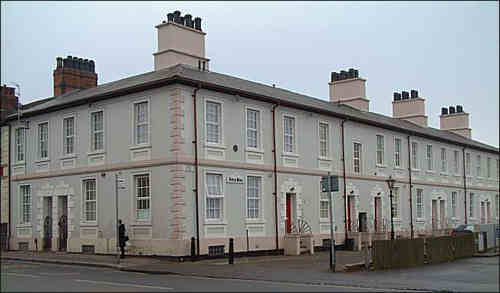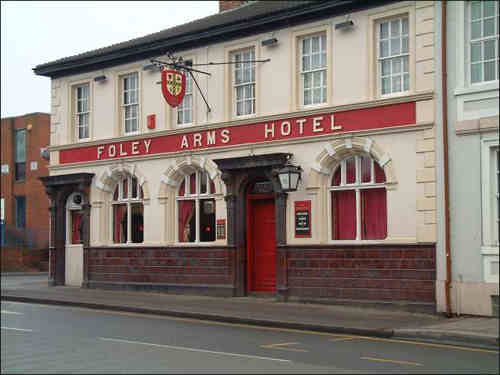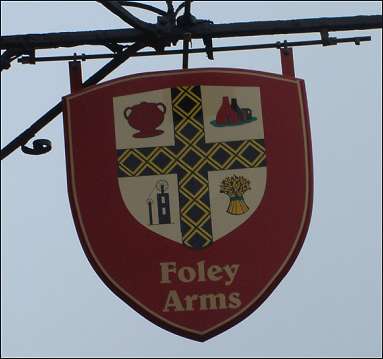Historian Steve Birks tells me the area known
as The Foley was centred on King Street, on the outskirts of Longton, and
by 1830 it was noted for several important potteries and some posh houses.
But how did it get its name, and why doesn't anyone call it Foley any
more?"It's possible that the name was derived from Lord Foley, a former
owner of the Longton Hall estate," Steve conjectures.
"The historian John Ward reasons the name may have been an ironic
gesture on the part of the architect who designed the district. In 1843,
there were two big potteries belonging to Knight, Elkin and Bridgwood.
They must have been extensive manufactories with large steam engines and a
flint mill.
"Nearby, another important pottery and house were built by Josiah Spode
for his second son Samuel. There was also Joseph Myatt's potbank and
house, on the steps of which John Wesley preached to a big crowd."
I can see Foley marked on one of Steve's early maps of Stoke-on-Trent,
with terraces on one side and potteries on the other behind the railway
line and the Foley Sidings.
In fact, you can still make out the washed-out lettering on the side of
an old King Street warehouse - London, Western, and Midland Railways. Here
also is the superb architecture of James Kent's redundant Foley Pottery,
the Boundary Works and Phoenix Works, fine examples of how our forefathers
created their working and domestic environment.

Foley Place
-photo 2003-
"One excellent model of restoration is Foley Place, near the east end
of King Street," says Steve. "This is an example of
middle-class housing was quite rare in the Potteries w it was built in the
1830s. It indicates how special Foley was seen in the eyes of those who
wanted luxury well as the convenience of towns close to their factories."
Foley Place consists of an L-shaped block of two-storey stucco house;
with basements constructed in late Georgian style. Originally there 11
houses and an inn, the Foley Arms. The layout included a communal garden
occupied these days by a petrol station.

The Foley Arms Hotel, King
Street, Foley, Fenton
The pub has seen better days and is currently unoccupied. "Over the
years the pub has been altered a lot," says Steve. "For instance the
decorative tiles out! are probably from the late Victorian period, but
they are really appealing as a feature of good hospitality." The hanging
sign depicts what may be the Foley heraldic signature [see note] - a
fretted St George Cross quartered by a ceramic urn, a cluster of be ovens,
a pithead wheel and a sheaf of wheat. Who knows if this is authentic? The
Foley family has left without trace.

The sign outside the Foley
Arms Hotel are those
of Fenton Town
"Foley must have been important because there was so much named after
it," concludes Steve.
"Foley House lay over the rail line, and existed as a farm even the
early 1950s.
"And in 1851, a small community Dominican nuns opened a convent at a
place called The Foley. On the expiry of its lease in 1854, the convent
was moved to Stoke."